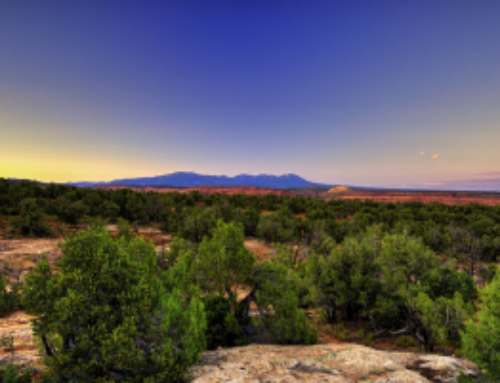Jun 4, 2024 – Craig Andrews
At the heart of the Hopi world lies a profound responsibility to steward and protect the lands known to us as Hopitutskwa. Our obligation to care for these lands extends beyond Hopi’s current jurisdictional boundaries. Many clans have ties to the region in and around Bears Ears National Monument (BENM), making this landscape significant to all Hopi people.
The Hopi ethic of guardianship is deeply woven into our spiritual and social fabric. Each time we harvest from Mother Earth, we make an offering in return, honoring a reciprocal bond that ensures the cycle of the earth’s bounty continues. For us, protecting Bears Ears is about more than conserving land; it is about honoring a pact made with our creator to act as environmental stewards.
The next chapter in fulfilling our obligation to our ancestral homelands has begun. The Bears Ears Commission, composed of the Hopi Tribe, Ute Indian Tribe, Ute Mountain Ute Tribe, Zuni Tribe, and Navajo Nation, has collaborated closely with federal partners from the Bureau of Land Management (BLM) and the U.S. Forest Service (USFS) on the draft Resource Management Plan (RMP) for BENM.
The Commission provided management recommendations based on centuries of Traditional Indigenous Knowledge and stewardship practices. Among the options presented in the draft RMP, Alternative E aligns most closely with our Tribal values and recommendations. Alternative E incorporates our collective insights, knowledge, and expertise in sustainable resource management and cultural preservation.
We invite you to support the five Tribes of the Bears Ears Commission by making a public comment in favor of Alternative E. The public comment period is open until June 11 and is crucial in shaping the final management plan for these ancestral homelands. Visit BearsEarsCoalition.org for more information, to learn about the types of comments the agencies are seeking, and to submit your public comment today.
Our Tribal teams, along with our federal agency partners, have worked diligently to create a management alternative that centers an ecosystem-based approach, reasonably balancing public access and use of the Monument with the protection of its cultural and natural resources.
Bears Ears remains a spiritual cornerstone in Hopi culture, a place where ancestors’ footsteps echo and their teachings still resonate. Our ancestral connection to this region, anchored in clan migrations and enshrined in tradition, reveals a cultural landscape rich in history and spirituality. The petroglyphs, artifacts, landmarks, and landforms help Hopi people verify our clan histories. Protecting this landscape is essential for understanding our ancestral migrations and preserving our cultural ties to this area.
For generations, we have practiced sustainable harvesting, guided by a seasonal calendar and deep-rooted knowledge, ensuring culturally significant resources are used appropriately. Today, our vigilance toward ecological conservation is more crucial than ever, with Bears Ears standing as a stronghold of Hopi history, identity, and ongoing cultural practices. The Hopi Tribal Council Resolution H-035-2016 recognized the immense value of the Monument, asserting the need for its establishment and continued preservation as a space that promotes stewardship and counterbalances historical over-consumption.
In the face of threats that endanger this sacred landscape, the time to act is now. We must continue to honor our elders and recognize our shared duty to protect BENM. By safeguarding this land, we honor not only the past and present of the Hopi people but secure a legacy for generations to come.
We call upon our tribal members, allies, and advocates to join us in this unprecedented mission. Support the Tribes’ efforts to safeguard Bears Ears National Monument.
Kwakwha (Thank you)
Craig Andrews is Vice Chairman of the Hopi Tribe (Bear Clan from the Village of Mishongnovi) and currently serves as Co-Chair of the Bears Ears Commission.
This letter was originally published in the Navajo-Hopi Observer



